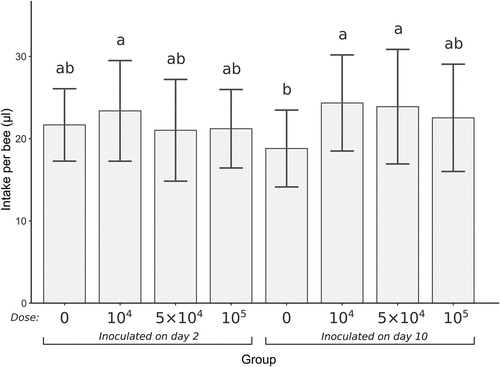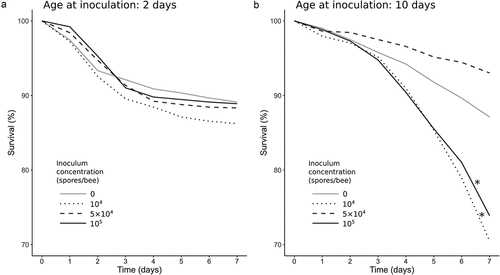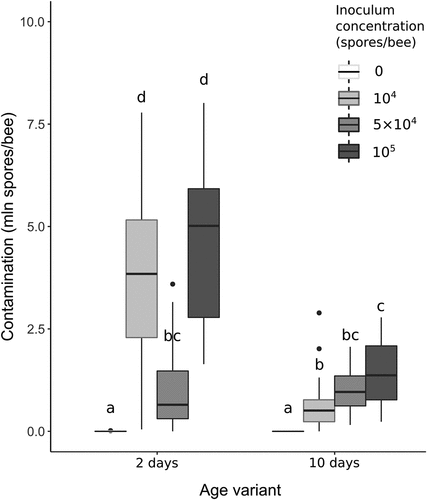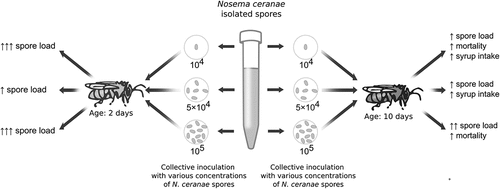Figures & data
Figure 1. Mean daily syrup intake per bee since inoculation over 7 days of the experiment duration. Error bars present SD. Groups are marked under the x-axis, the dose is an inoculum concentration (spores/bee), 0 means control group. Treatments with the same lowercase above the error bars are not significantly different (Kruskal–Wallis test with Holm’s correction for multiple comparisons, α = 0.05).

Figure 2. Percent of mean daily survival from inoculation to the end of the experiment. (a) bees inoculated on 2nd day post-emergence; (b) bees inoculated on 10th day post-emergence. Concentration of 0 spores/bee means control groups. Asterisks indicate significant differences compared to control (log-rank test, α = 0.05).

Figure 3. Distribution of N. ceranae spore counts after 7 days post-inoculation according to experimental variant. In the boxplots, the central line shows the median, box – interquartile range, whiskers – 95% confidence interval, and circles – outliers. The concentration of 0 spores/bee means control groups, which are presented on the left of each age variant. Treatments with the same lowercase above the boxplots are not significantly different (Kruskal–Wallis test with Holm’s correction for multiple comparisons, α = 0.05).


